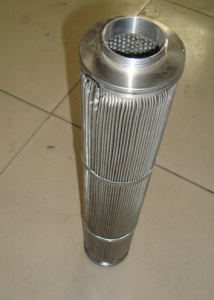
Mesh screen for Cross-Flow Filtration
The cross flow principle was implemented with hollow fibers in reverse osmosis and has expanded to become a crucial part of the filtration industry. To keep the surface clean from deposits, high-shear conditions are created and these are usually made possible by a high suspension velocity across the medium, or in some cases, by some part of movement of the medium with respect to the liquid flow. The movement based filtration is called as cross-flow filtration.
The cross flow filters fix the problem of reduced problem through the filter medium that is caused by fouling of the membrane surface or the resulting blockage of the pores in the membrane. The fouling and increased concentration will limit the flow of liquid through the membrane. Dynamic systems decrease the impact of fouling or concentration polarization by agitating the zone near the membrane surface in some way to develop additional shear.
The objective of cross flow filtration is to maintain high scour velocity throughout the membrane surface to decrease particle deposition and fouling. Sintered mesh used in cross-flow membrane acts in unsteady state manner in which suspended solids accumulate on the feed side of the membrane throughout the filtration cycle. At the end of each filtration cycle the membrane is backwashed to eliminate the deposited solids. Cross – flow filtration has been traditionally used in combination with inside-out membrane process to increase the scouring velocity in the system to minimize fouling.
In cross – flow systems, a part of the concentrate steam is reclaimed or recirculated to the filter system inlet and combined with the incoming feed stream. The concentrate steam has a higher concentration of suspended solids as compare to influent feed stream to the membrane process. The manner in which cross – flow systems concentrate suspended particulate matter depends on the volume of the feed in the membrane process. The suspended particulate matter continues to accumulate over successive filtration cycles as long as a stable process condition occurs in which the magnitude of solids delivered to the membrane system during a filtration cycle is equal to the magnitude of solids that are discharged during the backwash process.
With cross -flow filtration difficult materials can be filtered easily. When a cake of low permeability develops, filtration rates can fall to unreasonable levels. The cake thickness can be deceased by introducing shear forces at the cake surface. Low shear cross-flow operation is conducted by pumping slurries through channels with mesh walls or through mesh tubes. Rotating turbines are used in high shear devices. Cross – flow filtration is specifically a filter-thickening operation where the suspension thickens during its flow through the system. Eventually, the concentration reaches to the level where pumping or mixing is no longer possible.
While cleaning of filtration mesh, reverse flow is a better method to remove smaller particles from the membrane surface. The required cross-flow velocity to eradicate larger particles is based on various factors like ratio between the particle and mesh hole size, the transmembrane pressure and cross-flow channel size.
